I think my passion for Hellebores is equalled only by my passion for Dahlias. I don’t know why it took me so long to discover them. Perhaps, because they are more of a country plant than a city one. It was my loss though, because, like Dahlias, they’re a plant of intense beauty that looks marvellous when everything else in the garden looks….less than marvellous.
The other brilliant thing about Hellebores is that they are happy in shade (if the soil is humus-rich and free-draining). So, not only do they flower when everything else looks grim; they grow where very little else does. All round genius plants!
I wasn’t lucky enough to inherit a garden with mature Hellebores, so I started a small woodland garden from scratch in a shrubby area under a Cherry and two large, but airy, Robinia trees. Our third winter here, I dug up every random snowdrop I could find in the garden and replanted them in my ‘woodland’ garden. Then I ordered a thousand more from Clare Bulbs www.clare-bulbs.co.uk (not as expensive as it sounds) and put them in when they arrived in March.
Next, came the Hellebores. Mine are Hellebore x Hybridus, or Lenten Roses, which, in England, flower for a couple of months anytime from January till April. My first plants were tasteful, speckled whites. Lovely enough, but I quickly realised that having only white Hellebores was missing the point completely. Why have white, when you can have smoky plums, dusty pinks, acid yellows, lime greens and utterly true blacks? Hellebore colours are completely extraordinary – which is what makes them so addictive. And don’t get me started on the spots, freckles and stripes (called Picotee in Hellebore-speak).
Showing great self-restraint, I buy only three or four plants each January to add to my collection. Garden centres have limited colours, so try to find specialist suppliers like Ashwood Nurseries – www.ashwoodnurseries.com – who have truly beautiful plants which they breed themselves. I can spend hours on their website – quite literally a child in a sweet shop. In the US, try www.sunfarm.com. At £15-£20 a plant, they are pricey. But they are like little jewels and I think they are worth every penny.
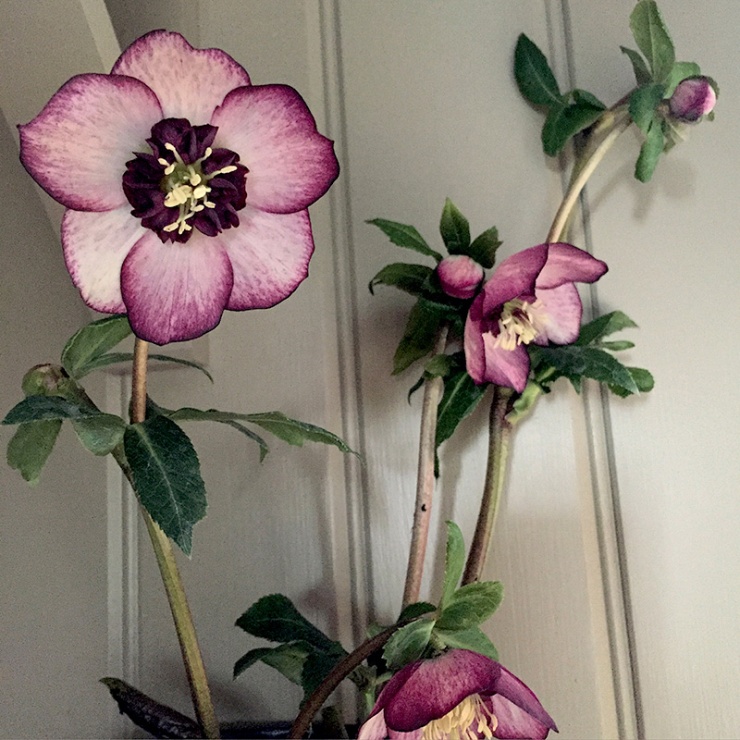
Last year, I discovered anemone-flowered Hellebores. They have a ruff-like ring of mini-petals around the nectaries at centre of the plant.

Another type of anemone-flowered Hellebore. Look at this one! That dark purple! You can see why they can become an obsession.
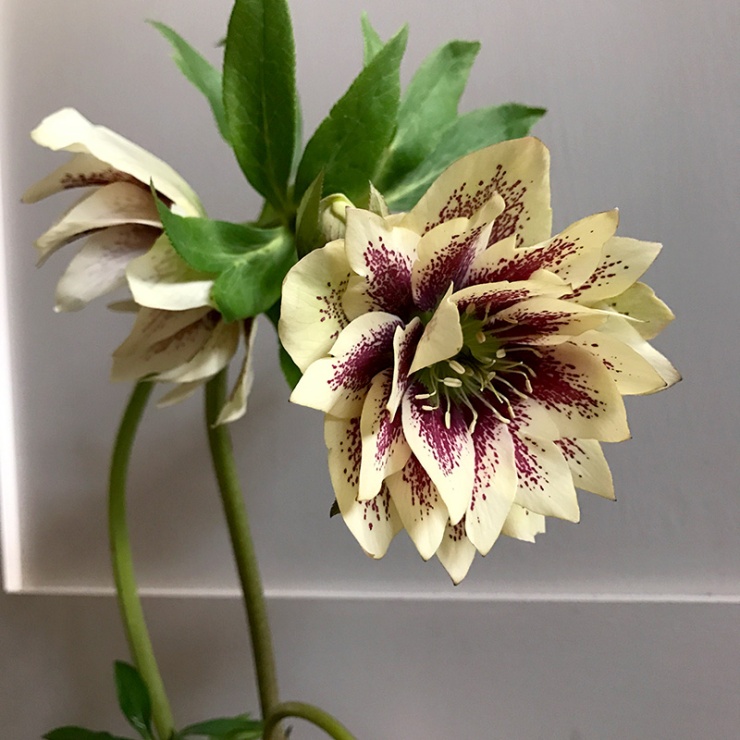
A speckled double. I love doubles, but they do tend to have heads that are even more droopy than normal. Droopy flowers is the only downside to Hellebores.

Kermit green! What’s not to love? It’s definitely worth looking into green Hellebores because they are quite extraordinary.

Yellow hellebores are quite rare and I’m always drawn to them when I’m trawling the nursery websites.
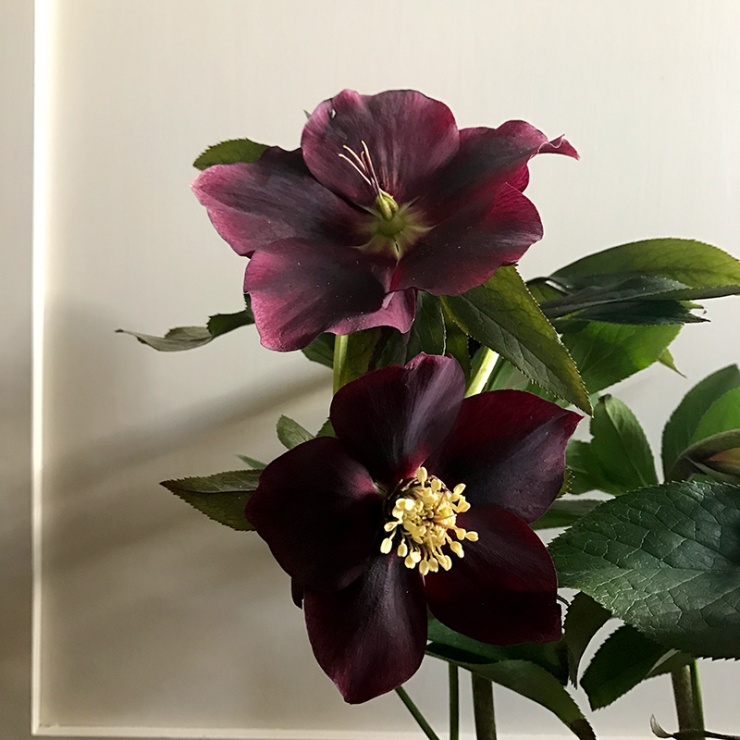
Velvety and intense, black Hellebores are considered the most chic. I can’t resist them, but always find it tricky to position them. Too far back in the border and they disappear. They need something to set them off.

This speckled, anemone Hellebore was a Mother’s Day present last year. Isn’t it irresistible?
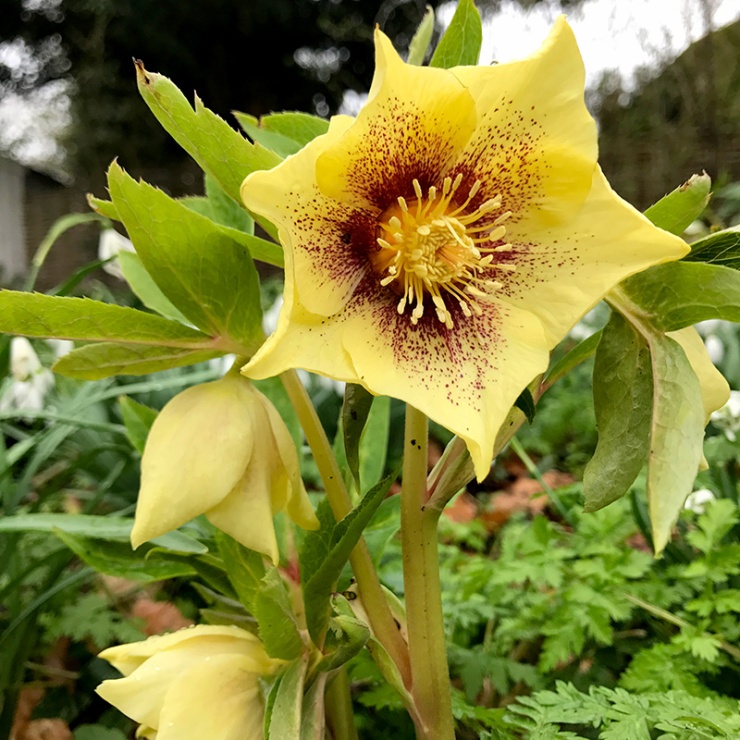
Another yellow favourite. Who knew red speckles could look so genius with custard yellow?
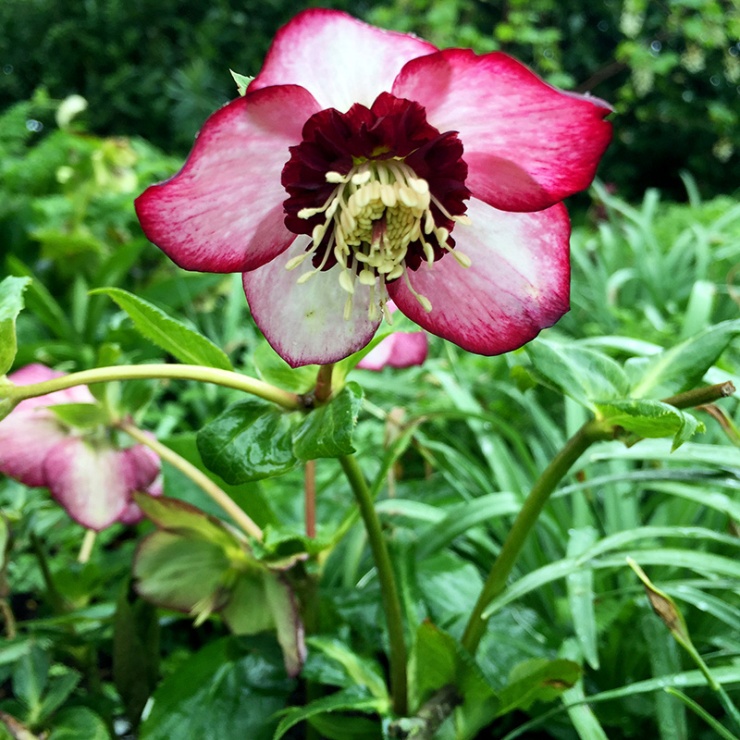
This is one anemone-flowered AND picotee (which means the edge of the flower is a different colour to the body of the flower). Btw, these hybrids don’t have names, otherwise I would let you know them.
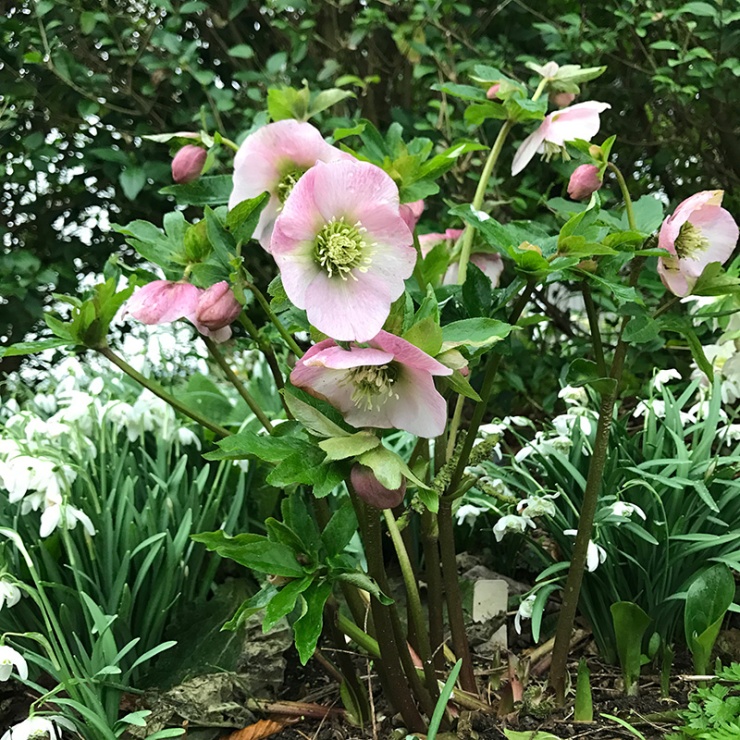
Hellebores amongst my snowdrops. Snowdrops must be ‘planted in the green’, otherwise they dry out. In the green means that they arrive in February/March/April still with their leaves and the remains of their flowers. I get mine from Clare Bulbs, a specialist company who dig them up from managed stocks in Scotland. I love the – rather romantic – idea that my Snowdrops are from Scotland.
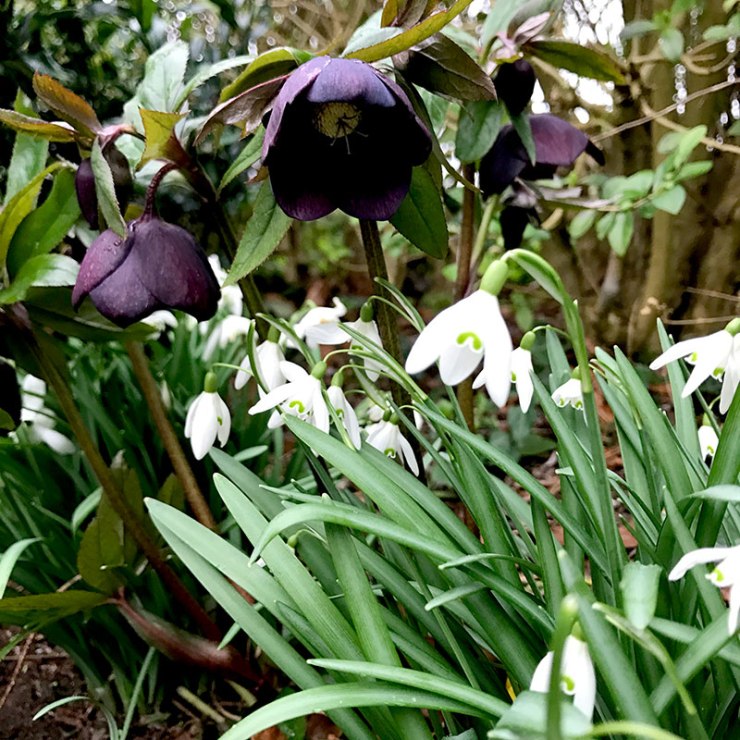
The blackest of my black Hellebores. This one is almost grey-black, like a chalk board!
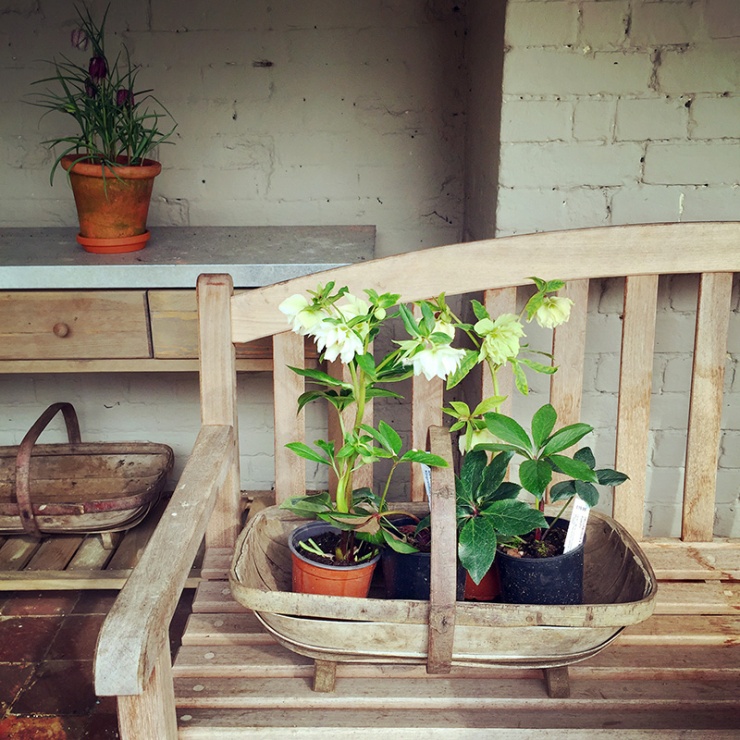
Hellebores waiting to be planted. They are deep rooted which means you need to dig as deep a hole as you can – which is not always easy in shady areas where there are often lots of tree roots! I mix leaf mould into the bottom of the hole (but you can use well-rotted manure or spent mushroom compost). Remember to water in and keep them well watered during their first year.
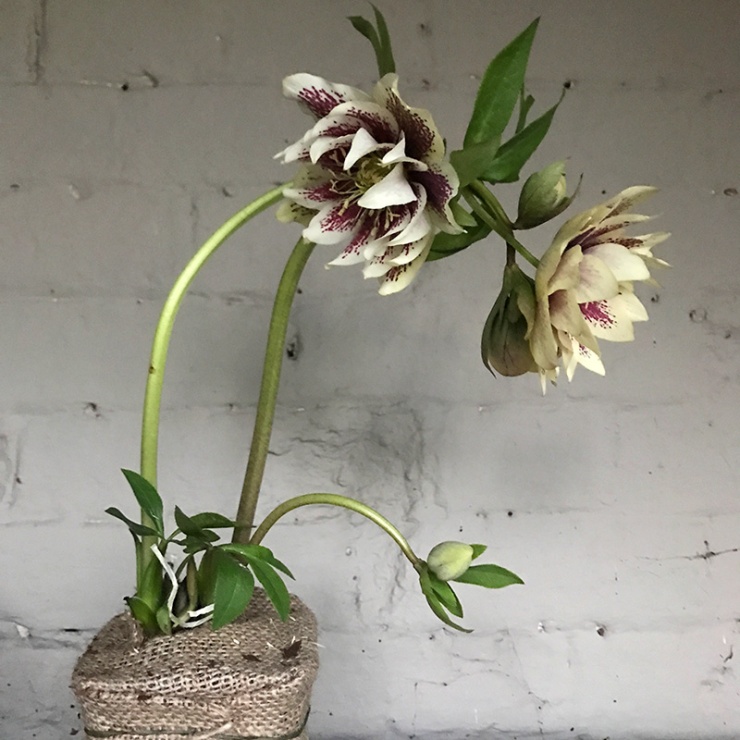
Even the packaging they arrive in is charming. To keep your Hellebores happy and encourage to them to bulk up, feed them in early spring and again in early September when new flower buds are forming. On the advice of an expert, I use blood, fish and bone – but Seaweed Fertiliser is also good.
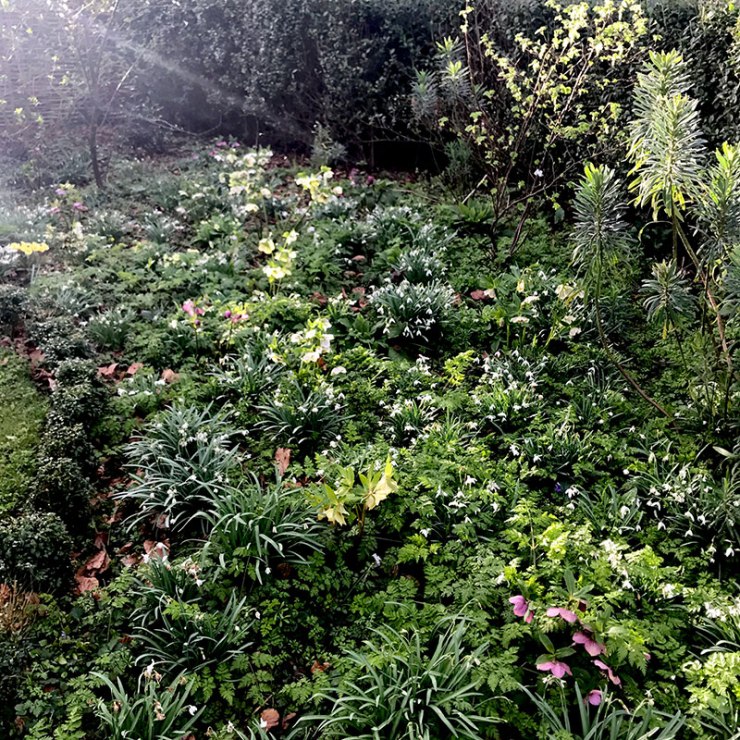
Try as I might, I can’t get a great picture of my ‘woodland’ garden. I think it’s because the Snowdrops and Hellebores make it so busy. Perhaps I have to accept that it’s more a garden of beautiful details than a beautiful overall look.

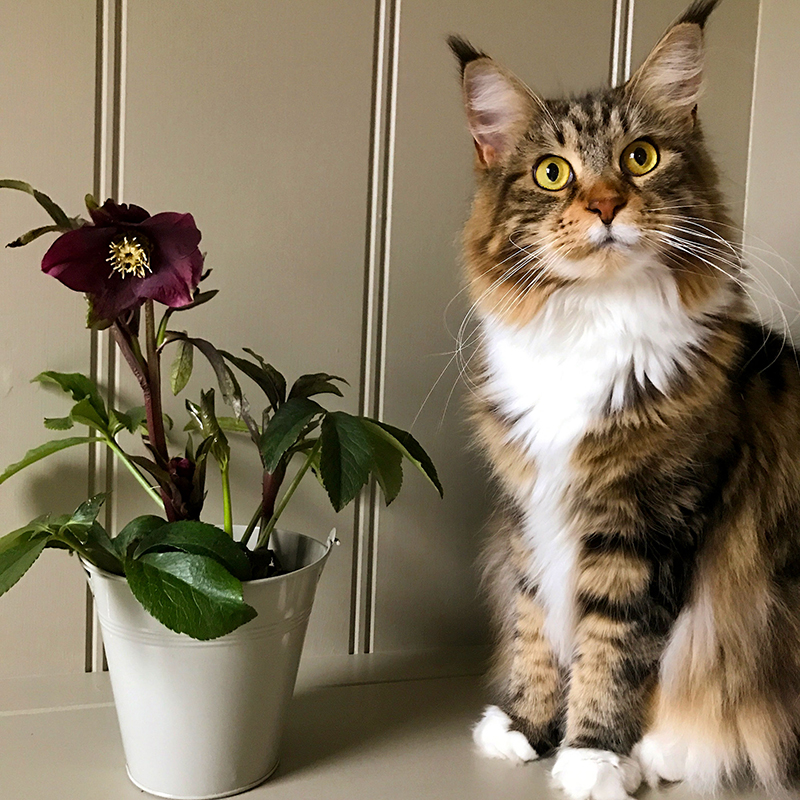
Absolutely stunning photographs & a beautiful blog to boot! You’ve inspired me to go get my muddy wellies & gardening gloves on!
LikeLike
I’m so glad! And I hope your weather is a bit better than ours is today.
LikeLike
Love love your hellebore post Charlotte!! I will be checking out the recommended suppliers ….. the kermit green variety really caught my eye!! Loving your blog too…..
Ali
An insta-follower 😊 alibababotanical
LikeLike
So good to hear that. Yes! Those greens! There are still some left if you order soon. More garden posts come….
LikeLike